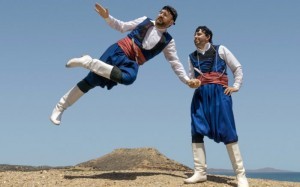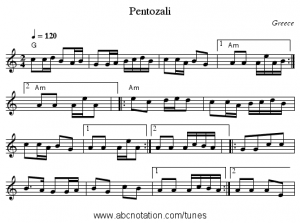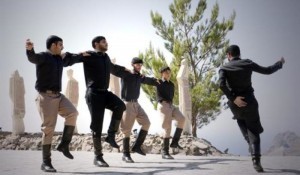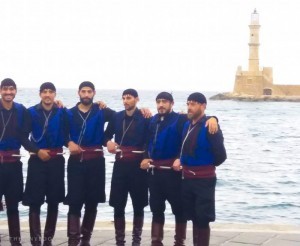Several are the traditions that characterize the different regions of Greece, as well as its people and its culture. Culinary traditions go hand in hand with folkloristic expressions that represent the soul and the love of the people for their land. Among them, dance and music have a prominent place. In Crete, the trademark folk dance is the Pentozali or Pentozalis (Πεντοζάλης).
The dance’s name comes from the combination of the words fifth (penti) and step (zalos, Cretan for step), therefore the dance can be translated as “five steps”; and even while zali can also stand for “dizziness”, indicating a dance that would make dancers five times dizzy, the Pentozali symbolizes the fifth zeal (that is, the step), that is the fifth attempt of the Greeks to liberate themselves from the Turks.
The ten basic steps of the dance are in memory of October 10, 1769, where it is danced for the first time in Anopolis, in the region of Sfakion, upon the decision of the Sfakians to make a Revolution.
Closely related to the tradition, Pentozali is a purely martial dance that wants to declare the uprising, heroism, and hope of the Cretans. Several references to the origin of the dance are made regarding the Minoan Dances and the Kourites, who danced with similar steps and movements an armed dance named Pyrrhic also known in Athens and Sparta.
Pentozali is a vibrant dance, with high jumping movements which also leaves space for the creativity and improvisation of the dancers who usually hold one another by the shoulders making a circle that keeps rotating counterclockwise at different speeds, depending on the mood of the music, which varies from a slow pace to a progressive speed to it.
The first dancer of the row is the one in charge of improvising his jumps and acrobatic movements. He would hold the hand of the next dancer, while the remaining ones still hold by their shoulders. This second dancer acts as a support pole, staying as much rigid as possible so as to allow the first dancer to perform. The first dancer moves back to the back of the line once his acrobatic steps are over.
Women can also take part of the pentozali but usually do so with more contained movements since the long dresses would not allow performing high jumps. Men dancing the pentozali usually wear the Cretan dress, made of a blue, brown or black vraka which is a type of breeches tight around the waist remaining loose in the hips. Normally the Cretan stivania (boots) are also part of the dress.
The music is mainly instrumental though there can be lyrics accompanying it. and usually played by a Cretan lyra, and a lauto played in a percussive-like way. The lyre player is in charge of directing the dance, he improvises as a way to tell the first dancer to do the same. He resumes the main time when the first dancer hs to give his place to another one.
Take a look at this video portraying a pentozali danced by the Cretan group Laographikos Omilos Chanion, courtesy of Alexandros Katsikandarakis.
Source: Gabi Ancarola/greekreporter
Ask me anything
Explore related questions








